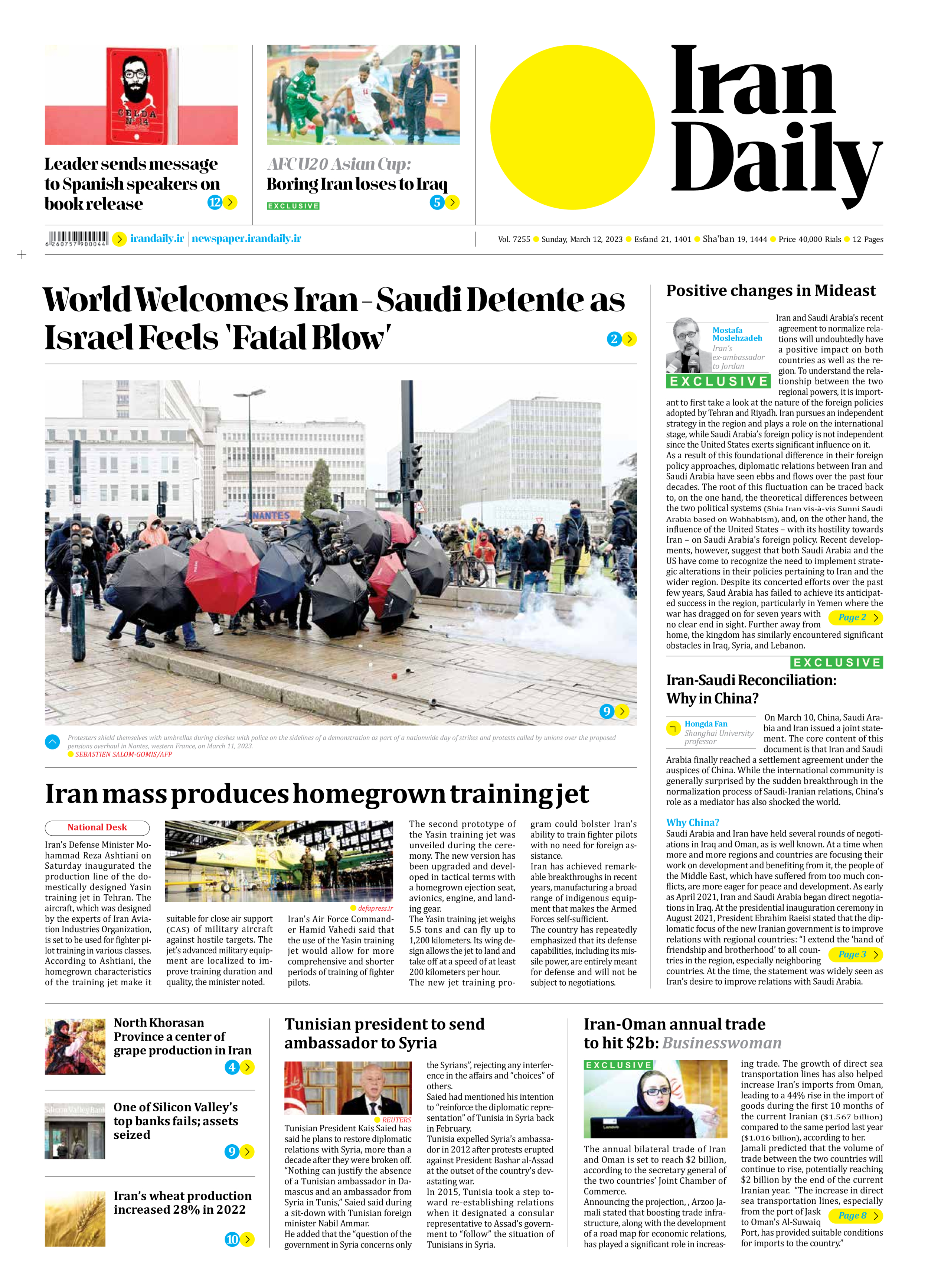
Positive changes in Mideast
Mostafa Moslehzadeh
Iran’s ex-ambassador to Jordan
Iran and Saudi Arabia’s recent agreement to normalize relations will undoubtedly have a positive impact on both countries as well as the region. To understand the relationship between the two regional powers, it is important to first take a look at the nature of the foreign policies adopted by Tehran and Riyadh. Iran pursues an independent strategy in the region and plays a role on the international stage, while Saudi Arabia’s foreign policy is not independent since the United States exerts significant influence on it.
As a result of this foundational difference in their foreign policy approaches, diplomatic relations between Iran and Saudi Arabia have seen ebbs and flows over the past four decades. The root of this fluctuation can be traced back to, on the one hand, the theoretical differences between the two political systems (Shia Iran vis-à-vis Sunni Saudi Arabia based on Wahhabism), and, on the other hand, the influence of the United States – with its hostility towards Iran – on Saudi Arabia’s foreign policy. Recent developments, however, suggest that both Saudi Arabia and the US have come to recognize the need to implement strategic alterations in their policies pertaining to Iran and the wider region. Despite its concerted efforts over the past few years, Saud Arabia has failed to achieve its anticipated success in the region, particularly in Yemen where the war has dragged on for seven years with no clear end in sight. Further away from home, the kingdom has similarly encountered significant obstacles in Iraq, Syria, and Lebanon.
Furthermore, the United States is also grappling with a stalemate in the region, having failed to settle the ongoing crises in Yemen, Syria, Iraq, and Lebanon. Despite its considerable influence and power in the region, America has been unable to overcome these challenges, indicating a need for a shift in its approach to the region.
Saudi Arabia, too, has realized that it needs to change its regional policies and reach out to Iran, a move that the US has also endorsed. Contrary to some analyses suggesting a shift away from the West toward the East, however, the United States is still the main factor when it comes to the shape and direction of Saudi Arabia’s foreign policy. The recent agreement between Tehran and Riyadh was reached with Washington’s blessing. That said, China and Russia have also had an impact, though they fail to be in the driver’s seat in regards to the kingdom’s foreign policies.
The normalization of relations between Iran and Saudi Arabia will undoubtedly usher in positive changes in the region, with the end of the war in Yemen being a possible first step. We can also expect changes in terms of the policies of the Persian Gulf Cooperation Council toward Iran and the region, as well as developments in Lebanon and Syria.
Owing to these auspicious developments, it’s not a surprise that the majority of nations in the region have embraced the accord between Tehran and Riyadh. The regional nations recognize that the abatement of animosity between these two influential powers will result in a mitigation of tensions throughout the entire region. These countries have borne the brunt of the deterioration of ties between Tehran and Riyadh, and, thus, it is only natural to greet this significant milestone with open arms. While Iran and Saudi Arabia have different strategies, they can make changes in tactics to secure their common interests.







